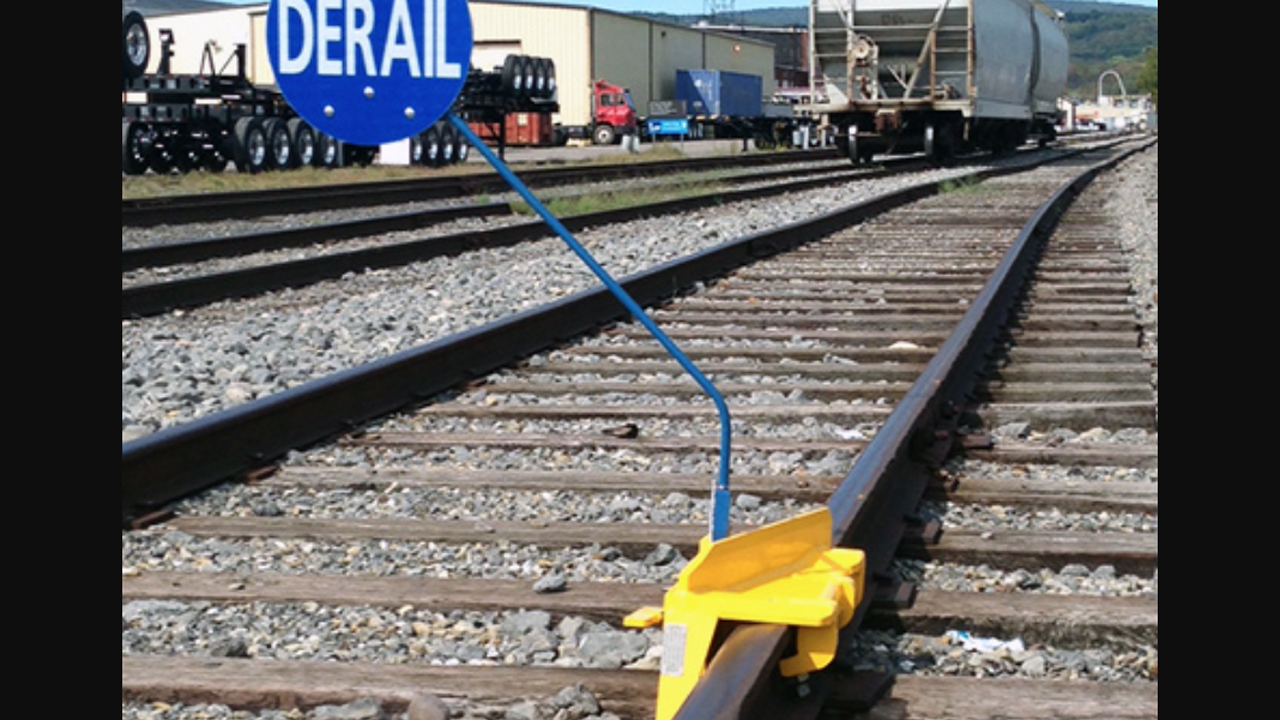
FRA Releases ‘Portable Derails’ Safety Advisory
Written by Marybeth Luczak, Executive Editor
Pictured: Example of a portable derail. (Wabtec Photograph)
The Federal Railroad Administration (FRA) has issued Safety Advisory 2022-01 for railroads and railroad contractors on the importance of ensuring that portable derails are clearly visible to train crews and operators of other on-track equipment (particularly at night and in other low-light conditions) and of having processes in place to make sure that portable derails are removed when not necessary for on-track safety.
The advisory stems from an Aug. 29, 2022 derailment, FRA reported in the Oct. 28 edition of the Federal Register (download below). “[A] train crew operating in a railroad yard at night encountered a portable derail placed on the track earlier that day to protect multiple engineering work groups working on the track,” FRA wrote. “The train crew, which did not see the derail, operated their train directly into the derail, striking it at approximately nine miles per hour and derailing the first two cars of their train. The conductor, who was riding the lead car, was fatally injured when the car rolled over.”
FRA’s blue signal protection (BSP) requirements “have long required mechanical derails to be used for the protection of workers on, under, or between rolling equipment to have a blue light illuminated at night. See 49 CFR part 218, subpart B,” according to the agency. “Typically, in BSP work areas (e.g., mechanical shops), derails are located at known or fixed locations. Roadway workers, however, use portable maintenance-of-way (MOW) derails, which may be installed almost anywhere on non-controlled track for protection.
“Because portable MOW derails are not required to be marked or otherwise illuminated for conspicuity, even under conditions of limited visibility, they can become hazards themselves if not highly visible in low-light conditions. Accordingly, best practice dictates that portable derails installed on track should be equipped with a portable light or, at a minimum, reflectorized flags in low-light conditions.”
FRA also noted that portable derails should not be left on the track when they are no longer necessary. For example, the agency reported, “some railroads require their roadway workers in charge (RWICs) to fill out a form before installing the portable derails. This form typically requires the RWIC to record the date, location, installation time, and removal time of the portable derail. Formalizing the process for installation and removal of portable derails heightens the awareness of the presence of portable derails and the importance of removing these derails from the track when they are no longer necessary.”
FRA pointed out “some railroads require employees to place a tag on the steering wheel of their hi-rail vehicles when placing shunts on the track. A similar process for placing portable derails would safeguard against roadway workers unintentionally leaving portable derails on the track.”
FRA is recommending that railroads and railroad contractors take the following actions:
- “Review with their employees the circumstances of the fatal accident described in this Safety Advisory.
- “Review and revise as necessary, their on-track safety manuals to ensure the use of portable derails is adequately addressed and, at a minimum, that these manuals:
—“Provide that portable derails be equipped with a functioning light or a reflectorized flag when used at night or under other conditions of limited visibility.
— “Include procedures to ensure that portable derails are removed when no longer necessary, such as procedures to track the location and use of portable derails.”
The agency wrote that it “encourages all railroad industry members to take actions consistent with the recommendations of this Safety Advisory. FRA may modify this Safety Advisory, issue additional safety advisories, or take other appropriate action necessary to ensure the highest level of safety on the nation’s railroads, including pursuing other corrective measures under its rail safety authority.”



